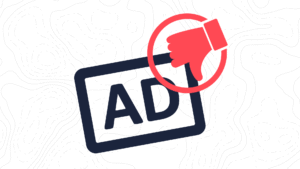When planning your digital marketing strategy, it is important to set goals and evaluate them with key performance indicators, also known as KPI’s. What exactly does this mean and look like with digital marketing? Let’s discuss.
First Things First
Before implementing a digital marketing strategy you must first identify what goals you want to achieve. Make sure you set smart goals and by “smart” I mean Specific, Measurable, Achievable, and Time-based. Do you want to rank higher in organic search results? Do you want to bring more traffic to your website? Do you want to increase your following on social media? Do you want to generate more reviews and/or user-generated content? Do you want to increase your site authority? Do you want to optimize your site for search engine optimization? These are all some examples of general goals you can set to begin your digital marketing strategy.
Know Your Numbers
To move in any specific direction, you must first know where you are! The same is true for your digital marketing. Take a look at your stats and note the numbers on your traffic, click-thru rates, social media following and engagement, search engine ranking, or any other numbers that relate to your goals identified. This is where the key performance indicators come in.
What are Key Performance Indicators?
Key Performance Indicators refer to a set of quantifiable numbers relating to a company’s performance. Let’s discuss a few KPI’s specific to the digital marketing world. How do you find out these stats? You can usually find them while navigating the back end of your website or social media profile. If that seems daunting to you, request a site audit that will package up these stats in an easy to read pdf file emailed to you!
Organic Traffic
Organic traffic is the number of users who find your website without clicking a referral link from another website or a paid ad. Organic traffic is heavily influenced by your search engine rankings. If you would like to increase your organic traffic, it would be beneficial to make sure your site is optimized for search engines. This could be part of your smart goals and strategy.
Keyword Ranking
Keyword ranking is where your site is listed on search results when users search for a specific keyword. Let’s say you have a business that specializes in commercial window washing. You want your site to rank high in search engines when users search for “commercial window washing.” Take a look at the back end of your website to see which keywords are used most often when your site is clicked. It is also beneficial to know what keywords your competitors are using that land them website visits. This is known as keyword research. To rank higher for specific keywords, you want to make sure that your website pages have those keywords identified and that you are regularly creating quality content with those keywords as the focus.
Conversion Rate
Your conversion rate is measured as a percentage of the total number of visitors to your site and the total number that completed an action on your site. For example, if you had 200 visitors in a month and 50 sales on your site then your conversion rate would be 50/200 or 25%. Do you want to increase the number that takes that actionable step such as completing a sale or signing up for your email marketing? Then you would want to gear your marketing efforts towards closing sales and enticing content.
Bounce Rate
Bounce rate is a term that describes how long a visitor stays on your website. Do they visit then quickly “bounce” away somewhere else or do they stay and visit multiple pages? Ideally, a user will stay and learn more about your business. An optimal bounce rate would be in the 25-50% range while the average bounce rate is around 40-50%. If your bounce rate is high, then your goals might be to update your content, images, evaluate your functionality, or redo your website altogether. (If your site is not mobile responsive, you may see a higher bounce rate since so many do business on phones or tablets. We can help fix that! Let’s talk!)
Page Load Time
We have all visited a site only to have it take forever to load on the screen. If you are like me, then you probably did not stick around. In today’s instant gratification world, fast-loading web pages are a must. An acceptable load time is between 2-5 seconds, but many users have reported that they leave a page if it takes more than 3 seconds to load. If you are seeing high bounce rates, then consider page load time as a culprit. To improve your site speed, you need to make sure your site is up to date, images are optimized and your host company can handle your site well.
Backlinks Built
Site authority is the credibility your website has in the eyes of search engines. It is directly calculated by the number of quality backlinks to your site. Be sure to evaluate your backlink profile. The number of backlinks does not have to be a large number but the quality of the sites that are linking to your site is what gives your website authority. Stronger authority means that it will rank higher in organic search results. If you have few backlinks, consider guest blogging for other sites that will link to you and joining resource sites for your business like local business guides or associations. If one of your smart goals is to improve your search engine rankings through search engine optimization then building a strong backlink profile would be one way to reach that goal.
Make a Plan
Once you have evaluated your key performance indicators, it is time to put some specifics to your goals. Choose 3-5 things to work on and give it some time to work. Most digital marketing techniques take at least a few months to see substantial results. Be patient but be consistent.
Key performance indicators, digital marketing strategy, and goal setting may be intimidating. We get that. That is what Dogwood is all about. We would love to help you evaluate your digital marketing efforts, help you set goals, and then put a plan in place to achieve those goals. Contact us today for a consultation and we can get the conversation started!
You might also enjoy reading how we use Key Performance Indicators in Dogwood’s Guide to SEO.


